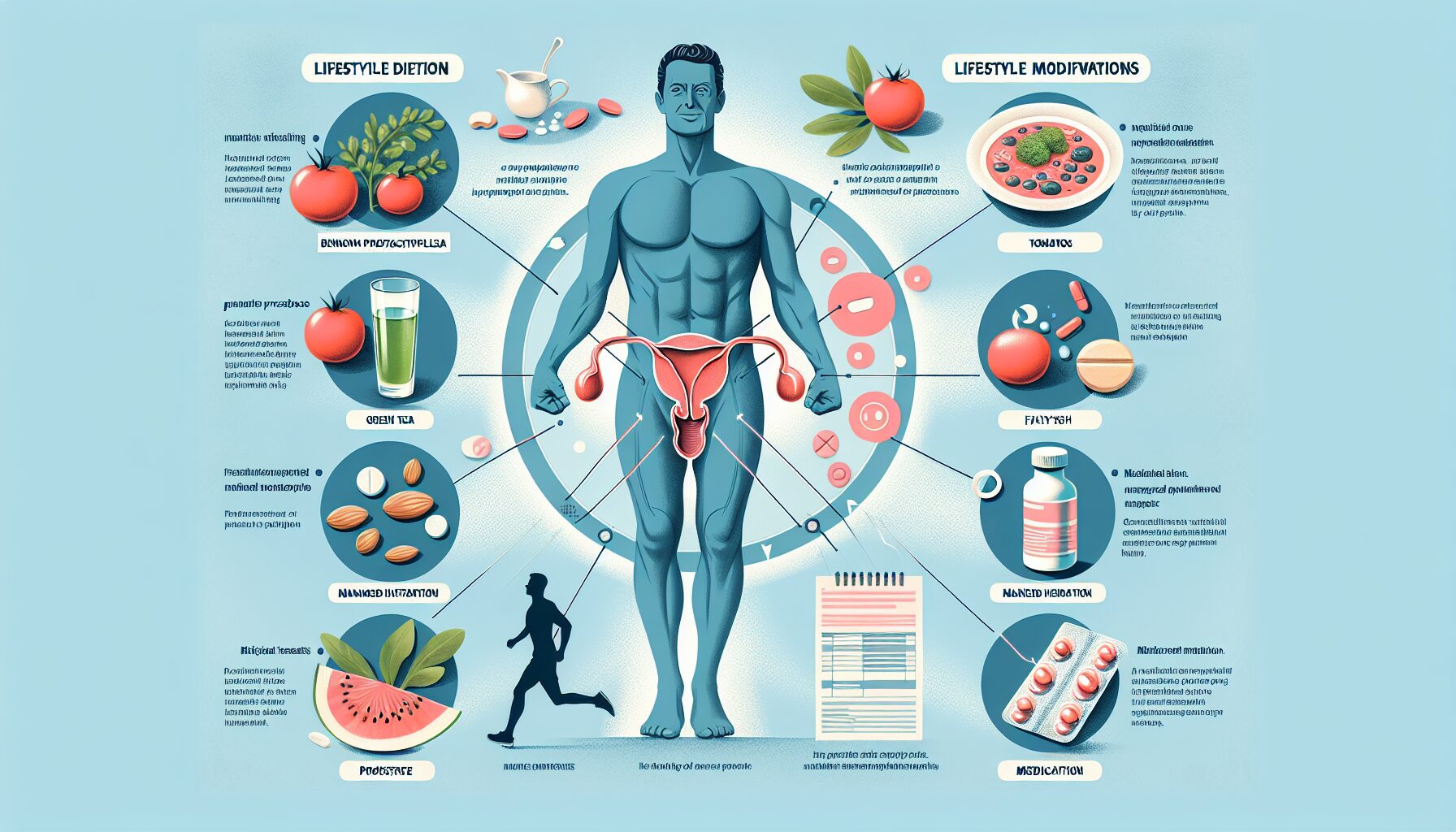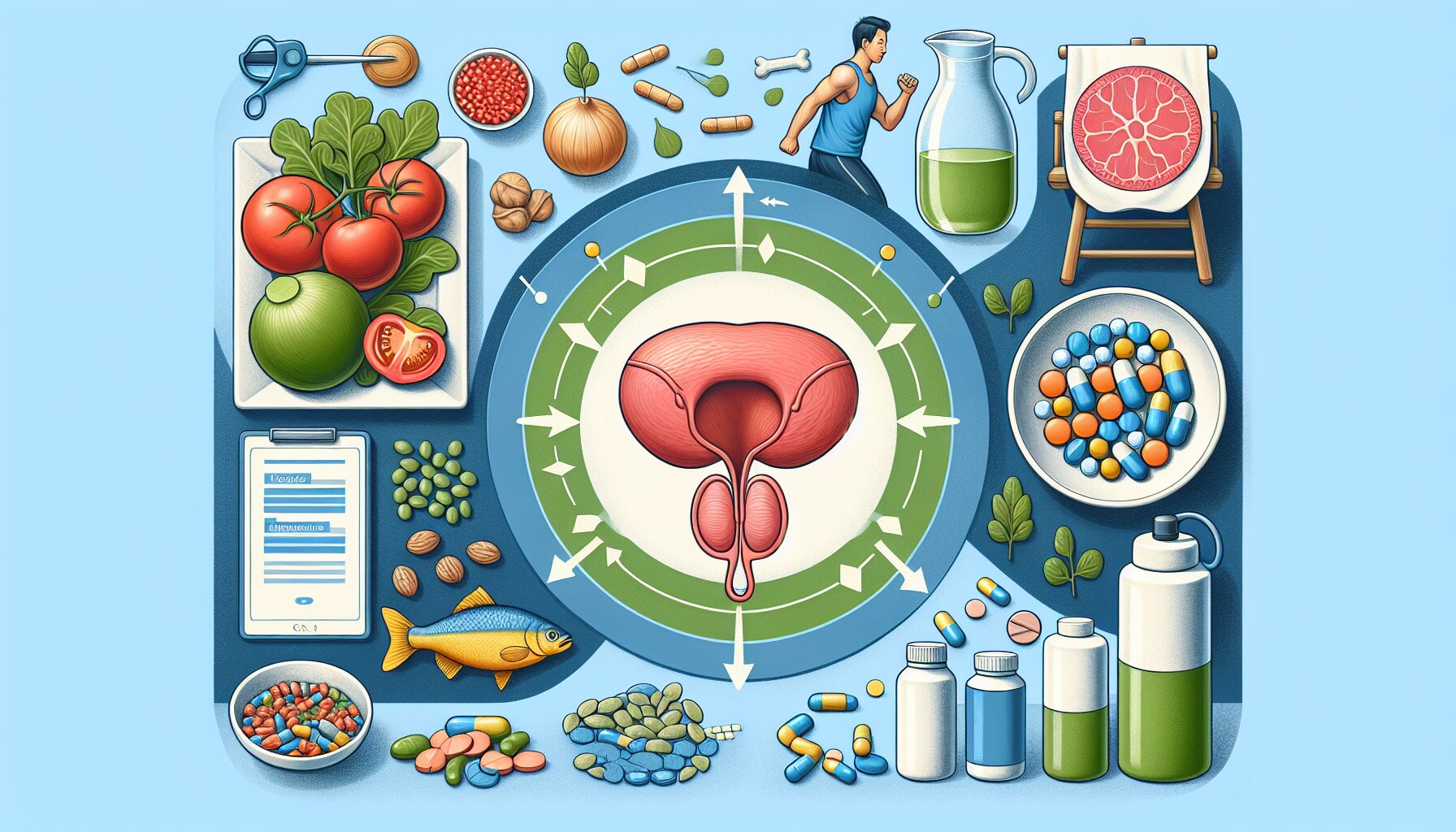Title: “Effective Strategies to Shrink an Enlarged Prostate: A Comprehensive Guide”
An enlarged prostate, medically known as benign prostatic hyperplasia (BPH), is a common condition affecting men as they age. By the time men reach their 60s, about 50% will experience some degree of prostate enlargement. While BPH is not cancerous, it can significantly impact quality of life by causing urinary problems such as difficulty in starting urination, a weak urine stream, and frequent urination, especially at night. Fortunately, there are several strategies to manage and potentially shrink an enlarged prostate. This article explores these methods in detail.
Understanding Benign Prostatic Hyperplasia (BPH)

Before delving into the strategies to shrink an enlarged prostate, it is essential to understand what BPH is and why it occurs. The prostate is a small gland located below the bladder and in front of the rectum. It surrounds part of the urethra, the tube that carries urine out of the body. The primary function of the prostate is to produce fluid that nourishes and transports sperm.
As men age, hormonal changes can cause the prostate to grow larger. This growth can press against the urethra and bladder, leading to urinary symptoms. BPH is a non-cancerous condition, but its symptoms can be bothersome and affect daily life.
Lifestyle Modifications
One of the first lines of defense against an enlarged prostate is making lifestyle changes. These modifications can help alleviate symptoms and may contribute to reducing prostate size.
# Diet
A healthy diet plays a crucial role in managing BPH. Foods rich in antioxidants, such as fruits and vegetables, can help reduce inflammation and support overall prostate health. Some specific dietary recommendations include:
– Tomatoes: Rich in lycopene, tomatoes have been shown to support prostate health.
– Green tea: Contains antioxidants called catechins that may benefit prostate health.
– Fatty fish: Omega-3 fatty acids found in fish like salmon and mackerel can help reduce inflammation.
– Nuts and seeds: High in zinc, which is essential for prostate health.
Conversely, reducing the intake of red meat, processed foods, and high-fat dairy products may also benefit prostate health.
# Exercise
Regular physical activity is beneficial for overall health and can help manage BPH symptoms. Exercise improves circulation, reduces inflammation, and helps maintain a healthy weight—all factors that can positively impact prostate health. Aim for at least 30 minutes of moderate exercise most days of the week.
# Hydration
Staying well-hydrated is essential, but it’s crucial to manage fluid intake strategically. Drinking large amounts of fluids before bedtime can exacerbate nighttime urination issues. Instead, spread fluid intake throughout the day and reduce consumption in the evening.

Medical Treatments
If lifestyle changes are not sufficient to manage BPH symptoms, several medical treatments are available. These treatments range from medications to minimally invasive procedures.
# Medications
Several types of medications can help shrink an enlarged prostate or relieve symptoms:
– Alpha-blockers: These medications relax the muscles in the prostate and bladder neck, making it easier to urinate. Examples include tamsulosin (Flomax) and alfuzosin (Uroxatral).
– 5-alpha reductase inhibitors: These drugs work by shrinking the prostate over time by inhibiting the hormone responsible for its growth. Examples include finasteride (Proscar) and dutasteride (Avodart).
– Combination therapy: Sometimes, a combination of alpha-blockers and 5-alpha reductase inhibitors is more effective than either medication alone.
It’s essential to discuss potential side effects with your doctor before starting any medication.
# Minimally Invasive Procedures
For men who do not respond well to medications or have more severe symptoms, minimally invasive procedures may be an option:
– Transurethral microwave therapy (TUMT): Uses microwave energy to destroy excess prostate tissue.
– Transurethral needle ablation (TUNA): Utilizes radiofrequency energy to heat and destroy prostate tissue.
– Prostatic urethral lift (PUL): Involves implanting tiny devices that lift and hold the enlarged prostate tissue away from the urethra.
These procedures are typically done on an outpatient basis and have shorter recovery times compared to traditional surgery.
Surgical Options
In cases where other treatments are ineffective or inappropriate, surgery may be necessary to remove or reduce excess prostate tissue:
– Transurethral resection of the prostate (TURP): The most common surgical procedure for BPH involves removing part of the prostate through the urethra.
– Laser surgery: Uses high-energy lasers to remove or vaporize overgrown prostate tissue.
– Open or robot-assisted prostatectomy: Involves removing part or all of the prostate through an abdominal incision; this option is generally reserved for very large prostates or when other methods have failed.

Natural Remedies
Some men turn to natural remedies for managing BPH symptoms. While scientific evidence supporting these remedies varies, some options include:
– Saw palmetto: An herbal supplement commonly used for BPH; some studies suggest it may improve urinary symptoms.
– Pygeum: Extracted from African plum tree bark; may help reduce urinary symptoms associated with BPH.
– Beta-sitosterol: A plant-based substance that may improve urinary flow and reduce residual urine volume.
Always consult your healthcare provider before starting any natural remedies, as they can interact with other medications or have side effects.
Conclusion
An enlarged prostate is a common condition that can significantly impact quality of life. However, various strategies—ranging from lifestyle modifications and medications to minimally invasive procedures and surgery—can help manage symptoms and potentially shrink the prostate. Consulting with a healthcare provider is crucial for developing an individualized treatment plan that addresses specific needs and preferences.
By understanding BPH and exploring available treatment options, men can take proactive steps toward maintaining their health and improving their quality of life.

GIPHY App Key not set. Please check settings